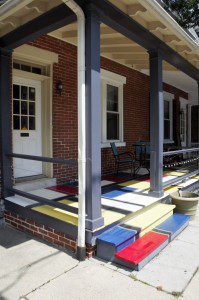What do You Want to Become?
Ever imagine what you want to become when you “grow up”?
When I was little , I knew that I wanted to be a teacher. Yes, I was one of “those” people, that always knew what they wanted to be. I spent my time teaching both real and pretend students, assigning the neighbors homework, and changing out the monthly theme of my bulletin board in my bedroom/classroom.
My mom was a teacher, so I quickly understood the steps that I needed to take to reach my goal.
1. Get good grades in high school
2. Apply to/ get into a college with a strong Art Education Program
3. Get really good grades in college, and as much teaching experience as possible
4. Apply to EVERY art teaching position that I could find
5. Practice, practice, practice for interviews, writing lesson plans, and teaching.
I followed these steps, and landed a full time high school teaching job 2 months out of college.
I knew what I needed to do, because I knew a lot of people that had already done it. And while I could have read books and articles, it’s always easier to learn directly from the source, to be able to ask questions, receive feedback and support.
You’re not exactly sure what you want to do, but you think that you’d like to be an artist, a writer, a fashion designer or merchandiser. Part of what’s holding you back, is that you aren’t sure how to make it happen. You’re afraid that you won’t get a good job, that you won’t make enough money, or worse, that you’ll fail completely.
” Art making involves skills that can be learned.
The conventional wisdom here is that while “craft” can be taught, “art” remains a magical gift bestowed only by the gods. Not so. In large measure becoming an artist consists of learning to accept yourself, which makes your work personal, and in following your own voice, which makes your work distinctive. Clearly, these qualities can be nurtured by others. Even talent is rarely distinguishable, over the long run, from perseverance and lots of hard work.”
” Art is made by ordinary people.
Creatures having only virtues can hardly be imagined making art. it’s difficult to picture the Virgin Mary painting landscapes. Or Batman throwing pots. The flawless creature wouldn’t need to make art. And so, ironically, the ideal artist is scarcely a theoretical figure at all. if art is made by ordinary people, then you’d have to allow that the ideal artist would be an ordinary person too, with the whole usual mixed bag of traits that real human beings possess. This is a giant hint about art, because it suggests that our flaws and weaknesses, while often obstacles to our getting work done, are a source of strength as well. Something about making art has to do with overcoming things, giving us a clear opportunity for doing things in ways we have always known we should do them. ” Art and Fear
Two exercises to help you become clear about your personal aesthetic when it comes to your work.
1. Look around your room. Look at the clothes in your closet ( or strewn across your floor), look at the pictures on your phone. Now start to make note of things that you see repeated over and over. Are there colors that keep reoccurring, shapes, patterns, lines. Jot these down in a sketchbook, and ask yourself, what do you like about those colors, shapes patterns and so on. What type of emotion do they evoke? How can you bring more of that into your artwork, or your writing?
2. Write 6 word stories. Write 5 or 6 as they usually get better after you’ve written a few. The rules for 6 word stories; they must be 6 words and ONLY six words. Practice writing stories that tell the reader something about yourself. Here are some examples.
– White women walking on black streets.
– Artist that paints with cotton yarn
– Teacher without classroom, but many students
– Dream of peace and artful streets
